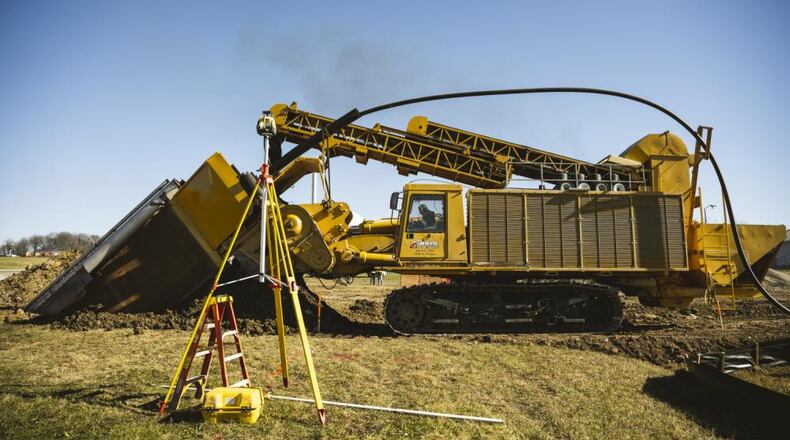In May 2016, the EPA established a lifetime health advisory level of 70 parts per trillion for drinking water. Since then, the EPA has started to promulgate a stricter standard, lowering the allowable level of the chemicals to near zero.
“As a result of past Air Force activities, there are known concentrations of volatile organic compounds (VOC) and PFAS compounds in the groundwater that is the source of drinking water at WPAFB,” the base said. “Our drinking water systems have the appropriate treatment systems in place that ensure concentrations of these compounds are below the current regulatory standards for drinking water.”
Wright-Patterson Air Force Base is committed to the health and safety of the base and surrounding communities, the base said in a statement.
“The Airmen of Wright-Patterson, both active-duty and civilian, and their families live in these communities and share the same concerns for safe water,” a statement from the 88th Air Base Wing said. “The Air Force Civil Engineer Center and the 88th Air Base Wing Civil Engineer Group are committed to identifying and addressing any environmental impacts and taking proactive actions to ensure surface, ground and drinking water is safe.”
The issue took on new prominence last week, when a group of environmentalists made public an internal study by the Department of Defense from April concluding that 175,000 military members at 24 installations across the country were exposed to unsafe drinking water containing PFOA and PFOS.
Wright-Patterson was on that list of installations.
Well sampling
Samples from four base wells detected the chemicals’ presence above 2016 EPA lifetime advisory levels.
And samples from 17 wells showed the presence of the chemicals above 2022 EPA regional screening levels or RSLs, according to the data obtained by the Dayton Daily News from Wright-Patterson.
RSLs are not cleanup standards and should not be applied as such, the 88th Air Base Wing said in a response to questions.
The June testing data was presented in a Dec. 12 meeting of the base Restoration Advisory Board.
Another water sampling is scheduled this month, according to the base.
The Dayton Daily News requested interviews in the past week with someone who has knowledge of remediation efforts at Wright-Patterson. A spokeswoman for the 88th Air Base Wing, the unit charged with securing and supporting the large Air Force base, said responses to questions would be given in writing.
Information provided to this newspaper indicates that 12 wells yielded samples of PFOA (perfluorooctanoic acid) above 6 parts per trillion. Five wells showed the presence of a chemical, PFOS (Perfluorooctane Sulfonate or Perfluorooctane Sulfonic Acid), above four parts per trillion.
Remediation work
The toxic chemicals were once used in nonstick frying pans, water-repellent sports gear, and military firefighting foam. The substances were voluntarily phased out in the U.S., but they remain in some products and in the environment, and a Wright-Patterson spokeswoman has said the base has moved on to a different kind of firefighting foam.
In March 2022, Raymond Baker, environmental branch chief at Wright-Patterson, told this newspaper that PFOA chemicals were found in amounts above EPA-recommended lifetime health advisory levels at base sampling sites.
However, those levels were found in groundwater or surface water, not drinking water, Baker said at the time.
According to the Restoration Advisory Board, 26 base sites will be investigated, involving the installation of 79 monitoring wells, the collection of 110 groundwater samples, 220 soil samples, 26 surface or stormwater samples and 32 sediment samples.
The base conducts sampling quarterly from 14 monitoring wells, according to the Restoration Advisory Board. Information provided by the board says the DOD is “evaluating its efforts” to deal with the chemicals in anticipation of the new, stricter EPA standards.
About the Author

